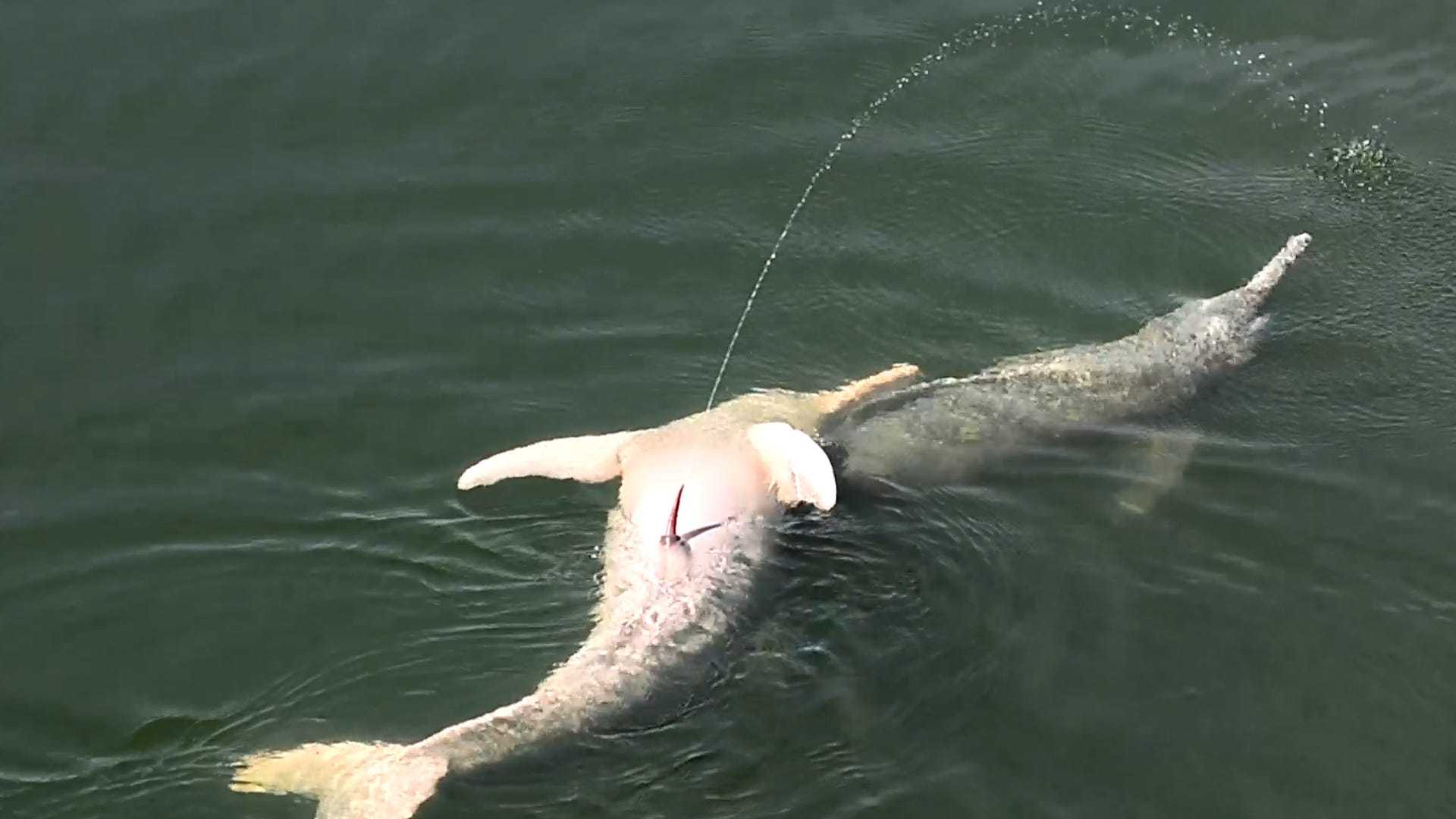News
Rare Dolphin Behavior Captured: Aerial Urination Shocks Researchers

BRASILIA, Brazil — A video resurfaced recently showing an Amazon river dolphin, or boto, engaging in a rare behavior that has left researchers both fascinated and bewildered. The footage, originally recorded in March 2016, captures a boto leaping from the Tocantins River and urinating into the air while another dolphin swims nearby.
This unusual act of aerial urination has been documented as a behavioral phenomenon among these cetaceans, according to a study published in the February 2025 edition of the journal Behavioural Processes. Researchers Claryana Araújo-Wang, Mauricio Cantor, and John Y. Wang provide insights into this behavior, noting that it typically commences with a male boto positioning itself upside down, exposing its penis, and ejecting a stream of urine into the air.
The study revealed that this aerial urination behavior is likely a social interaction rather than a basic physiological need, as the average duration of urination events was recorded at about 11 seconds. “When a ‘receiver’ male is present, it either approaches the urine stream with its rostrum or remains where the stream contacts the water,” the researchers stated. The anatomy of the dolphins, particularly the bristles on their rostrum, may allow them to detect chemical cues in the urine.
Remarkably, the team documented 36 instances of aerial urination from September 2014 to March 2018, all involving wild male botos. This behavior was first observed in 2014 during standard fieldwork, leaving researchers stunned. Araújo-Wang recounted, “We were really shocked because it was something that we had never seen before or heard of from other researchers.”
This phenomenon raises questions about the social dynamics among male botos and the potential role of scent marking similar to terrestrial animals. While on land, many species utilize urine spraying for territorial claims and mate communication, this method’s relevance in aquatic environments is less clear. However, the behavior’s apparent specificity to males interacting with one another suggests a communication strategy.
Though researchers hypothesize that the act may serve as a form of signaling among males, the exact nature of the messages conveyed through this behavior remains a mystery. Araújo-Wang emphasizes the intrigue surrounding this unusual behavior, noting the importance of further studies to unravel its significance in boto social interactions.
For those interested in witnessing this unique phenomenon, a video of the aerial urination can be seen online. This remarkable behavior not only highlights the complex social structures of Amazon river dolphins but also emphasizes the need for continued research into their communicative practices.












